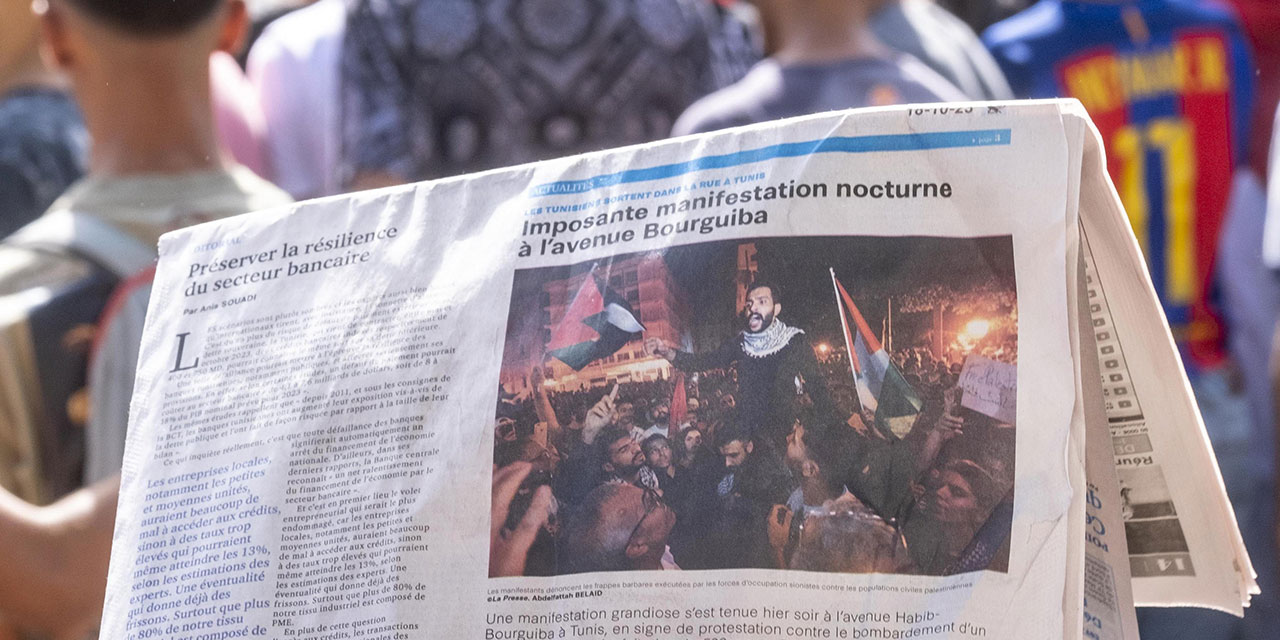Blood
Anatomy of a Blood Libel
On October 17, just before President Joe Biden’s planned visit to Israel, an explosion rocked the al-Ahli Baptist Hospital in Gaza. Within moments, the Hamas-controlled Ministry of Health blamed an Israeli missile and reported 500 civilian deaths. Failing to question the implausible speed with which the ministry counted the dead, media outlets accepted and propagated the narrative. Though subsequent events exonerated Israel of any involvement, the damage to its international reputation had been done. Protests erupted across the Middle East and several major Western cities, including in Washington, where hundreds of activists were arrested for storming and occupying the Capitol Rotunda.
How did major news outlets botch this story so badly? You might be surprised to know that a clear pattern plays out almost every time an incident like this occurs in the Israeli–Palestinian context, involving sloppy journalistic practices and politicized nongovernmental organizations. As the Israel-Hamas war seems set to escalate, the American public should recognize these dynamics to avoid being misled.
Several explanations account for the media’s bad recent reporting. The most obvious is that every outlet races to break the latest big story, and Israel potentially bombing a crowded hospital certainly fits the bill.
Some (naive) journalists genuinely believe that Gaza’s Ministry of Health is a credible source, failing to recognize that it is a Hamas-run institution. The media often differentiates between the “political” and “military” wings of terrorist organizations, but in Hamas’s case, no such distinction exists. As Florida senator Marco Rubio bluntly put it, “We need to stop referring to the Gaza Ministry of Health. It is the Hamas Ministry of Health.” A statement from the ministry might as well have come from Hamas’s Izz ad-Din al-Qassam Brigades.
Further, international media outlets largely rely on Gaza-based journalists for information-gathering. According to the Palestinian Journalists Syndicate, no foreign reporters are present in Gaza, meaning that every story including on-the-ground reporting depends on information fed to foreign outlets by local stringers, who could be influenced by, or under the direct control of, Hamas or its sympathizers, whose numbers are many in Gaza. For instance, the New York Times recently rehired a Gaza-based reporter previously dismissed for endorsing terror attacks against Israel and praising Hitler.
But how is the initial distorted narrative amplified once published? Numerous anti-Israel actors, often posing as human rights organizations, rush to share opinions that align with the Hamas Health Ministry’s talking points. Their perspectives then get added to subsequent news articles, which portray spokesmen for these organizations as objective experts. The U.K.-based Forensic Architecture, and the Israeli-designated terrorist organization Al Haq, based in the West Bank, are two such groups.
Fortunately, the digital age has democratized information verification. Shortly after news of the hospital explosion broke, online investigators began casting doubt on Hamas’s claims, presenting evidence that a misfired Palestinian rocket was the real cause. Amid the rapid-fire revelations supporting this view, some media outlets, including the New York Times, repeatedly stealth-edited their headlines to absolve Israel—without directly implicating Palestinian terrorists.
Video footage surfacing the morning after the hospital explosion revealed that the Hamas rocket debris landed near the facility, not on it, and it turned out that the actual death count was fortunately far lower than first thought. President Biden, along with French and Canadian military intelligence agencies, confirmed that the explosion likely resulted from a Palestinian rocket misfire.
Yet the false narrative persists. Despite the story’s refutation by numerous reputable sources, many groups and individuals still blame Israel. Washington Post reporting continues to refer to a report by Forensic Architecture that casts spurious doubt on the findings of American, Canadian, and French intelligence agencies. Corrections to initial reports were few and far between, and though the New York Times published a lengthy mea culpa on October 23, it’s doubtful that many will read it.
The misleading narrative was cemented from the moment Hamas’s Health Ministry spoke out. Israel never stood a chance at quashing it. This incident underscores media’s tendency to prioritize speed over accuracy, their frequent reliance on questionable sources, and the potential biases of their own staffs. Unfortunately, stories about violent confrontations between Israel and Hamas often unfold in precisely this manner.
In an era of rapid information dissemination, it’s crucial to approach early narratives with skepticism. The hospital explosion story shows how effortlessly falsehoods can blot out reality when enabled by politically motivated actors. As news consumers, we need always to demand evidence and champion the pursuit of truth, above all. Remember this the next time the media amplifies an anti-Israel blood libel—probably sooner rather than later.
Photo by Nicolas Fauque/Getty Images
City Journal is a publication of the Manhattan Institute for Policy Research (MI), a leading free-market think tank. Are you interested in supporting the magazine? As a 501(c)(3) nonprofit, donations in support of MI and City Journal are fully tax-deductible as provided by law (EIN #13-2912529).

